About Aron Rook:
Aron Rook of Cumberland County, PA is a muralist, illustrator, and wood carver. She has been immersed in the arts since she was a small child: ballet, music, drawing, and now visual arts that fill walls and extend beyond two dimensions. In late 2022, she shared her thoughts about courage, gratitude, family heritage and artistic exploration with folklorist Amy Skillman.
Aron is pronounced like Erin: AIR-in.
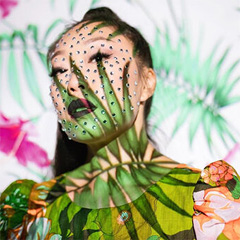
photo courtesy of the artist
About Aron Rook
Foundations
Aron Rook was left on the doorstep of an orphanage in Seoul, Korea with her given name and birthdate attached to her blanket. At 13 months old, she was adopted by her family in Central Pennsylvania. Aron honors the choices made by her biological mother and holds immense gratitude for her adoptive family.
For most of her life, Aron has been aware of connections to both families. And she wondered, as so many trans-national adoptees must, if her birth parents are still alive. But more recently she has been focusing much of her art on bridging her two families, through art and spirit. “I want them to meet each other.”
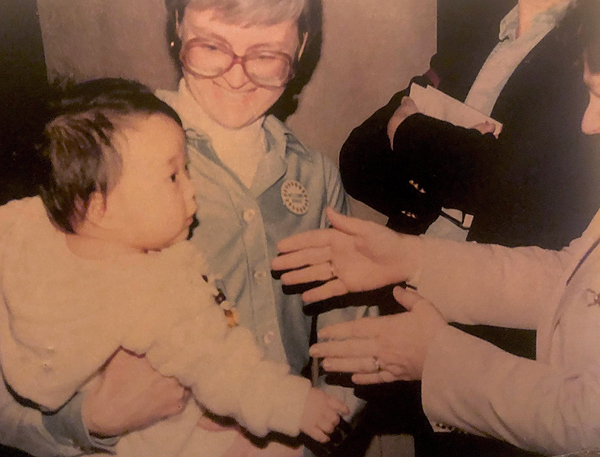
photo courtesy of the artist
Artistic awakenings
Even when Aron was a child, her parents sensed that her mind, heart, curiosity, and life would be in the arts. “I remain in many ways just as I was as a child. I play, laugh, cry, and feel deeply in this very real world. I pretend, and imagine, and create. I continue to be fascinated by deep learning, deconstructing, reconstructing, and building.”
Aron grew up on a farm, within a creative family. Her grandfather worked with wood; her grandmother was an oil painter and an active musician and music teacher. Her grandmother “was the first to express that I ‘looked’ — because when I drew a horse, its legs had joints, and were not just sticks. That single comment,” says Aron, “opened up a world and a fascination for visual art.” Throughout her entire childhood, Aron’s family found many opportunities for her to explore the world of the arts — a world where she felt at home.
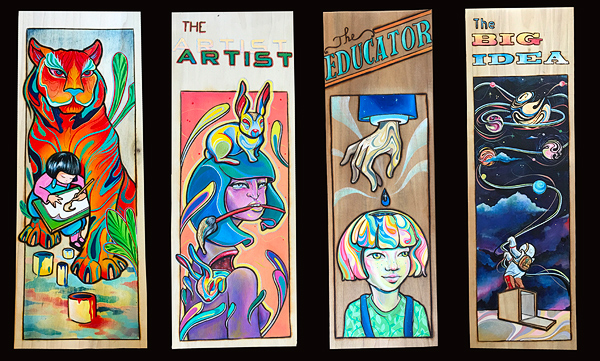
image courtesy of the artist
From the age of two until she was 15, Aron was immersed in ballet culture, spending most of those years at “The Barn” with the Central Pennsylvania Youth Ballet. Ballet culture is one of “rigor, discipline, mindful movement, beautiful lines, attention to detail, and imagination,” a complement to her family culture of high expectations and hard work on the farm. She recognizes that both have been fundamental in her expectations of herself and what she might be able to contribute.
“Ballet was the initial seed of my interest of the arts. To move, feel, expand and express; to practice, practice, practice. Each dancer had their own superpower and we all learned from each other. One could jump, one had high extensions, one had quick clean footwork for allegro; another had elegant lines in adagio.”
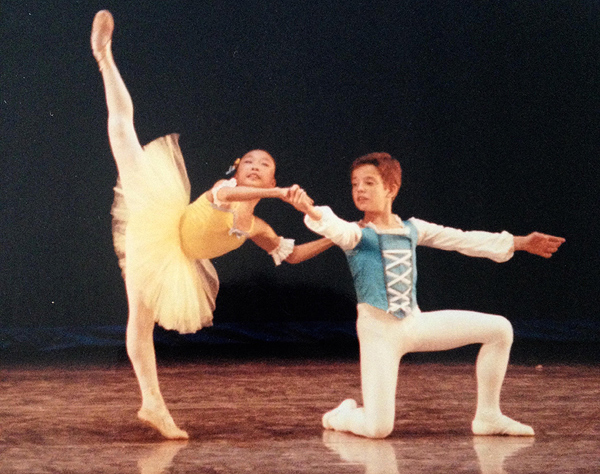
photo courtesy of the artist
From dance to illustration
Moving through lessons in violin, French horn, voice, ballet, and even acting, Aron eventually shifted her interest solely to the visual arts. She participated in the Pennsylvania Governors School for the Arts, Rhode Island School of Design’s pre-college program, and received early admission and a scholarship in Illustration from Maryland Institute College of Art.
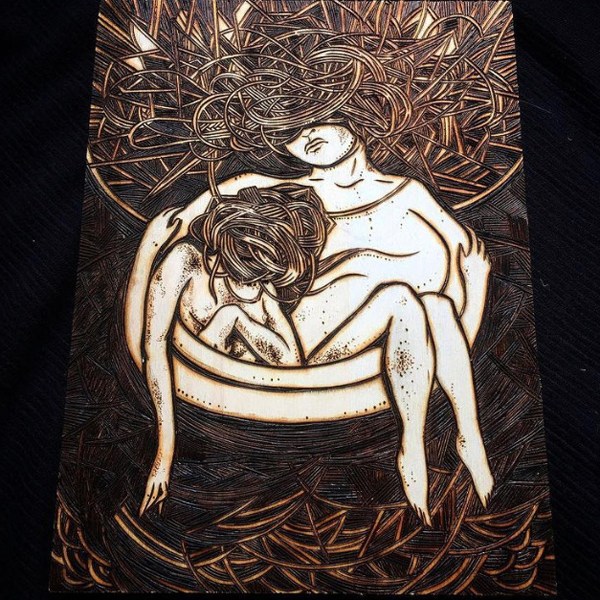
image courtesy of the artist
Illustration moved her naturally into painting and mural arts. “As my life progressed,” she notes, “my work has followed suit in style and medium. In young adulthood the work was dark. I held interest in the beauty of inner shadows, searching for glimmers of hope. The work was mostly black ink abstract and figurative. But over time, I have shifted into a more illustrative style. I find myself these days interested in color, fades, mood, movement, and a continuing interest in how to create beyond 2-D.”
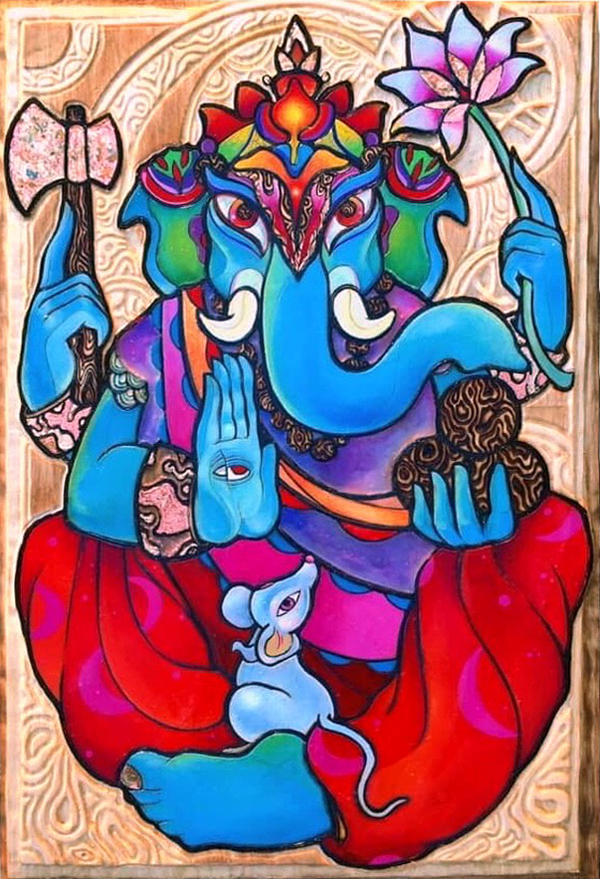
image courtesy of the artist
Painting the town beautiful
Aron is now one of the artists on the roster of muralists held by Harrisburg-based Sprocket Mural Works (SMW). When SMW’s co-founder Megan Caruso moved to Harrisburg, PA as a young woman, she fell in love with the city. But it didn’t take long to learn that the public stories about Harrisburg were toxic. Like so many urban environments, the media focused on stories of crime and poverty and garbage. She wanted to change that. When she walked her neighborhood, she saw creativity, community, and compassion. Those are the stories she wanted to tell.
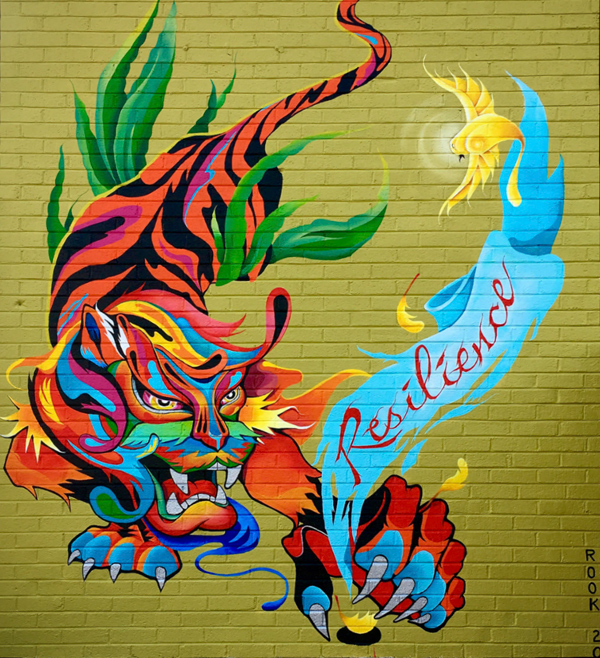
photo courtesy of the artist
Megan had seen murals in other cities and was curious to know what a mural initiative could do for her new city. While murals are often valued for their economic development impact, Megan believes in their power to heal. She says, “Murals change your environment; they change how you feel about yourself and your neighborhood...the research shows that art causes us to heal more quickly, that engagement with art reduces pain.”
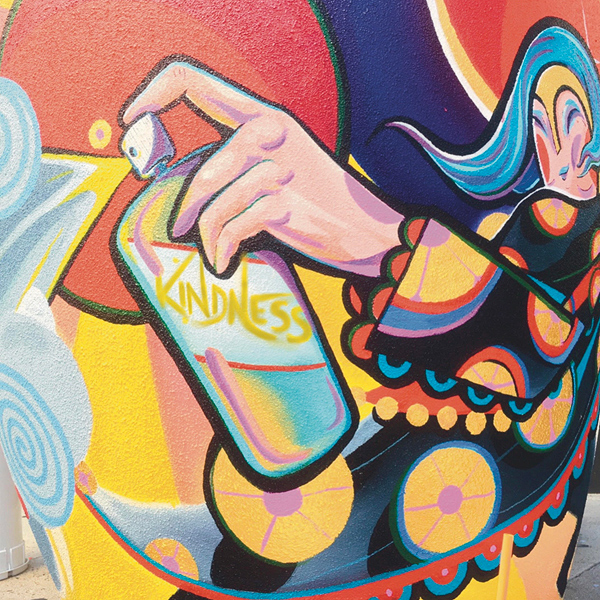
photo courtesy of the artist
So in 2014, Megan Caruso co-founded Sprocket Mural Works with fellow artist Jeff Copus. Its mission is to “increase community pride and civic engagement in Harrisburg through creative action.” They work with neighborhoods, artists and organizations to create community murals across the city. They organize the annual Harrisburg Mural Festival, during which as many as 10 new murals might pop up around the city. They also offer trolley rides and walking tours of the existing murals. Over 7,000 people attended recent festivals. Aron has participated in these opportunities to paint stories onto the city’s walls.
Telling community stories
Although the process is facilitated by a lead artist, effective murals engage people from the neighborhood in designing and painting the images. Megan, Aron, and the volunteers at Sprocket Mural Works are always asking, “What kind of mural do you want?” The most consistent answers are murals with nature, animals, people, and color — lots of color.
photo courtesy of the artist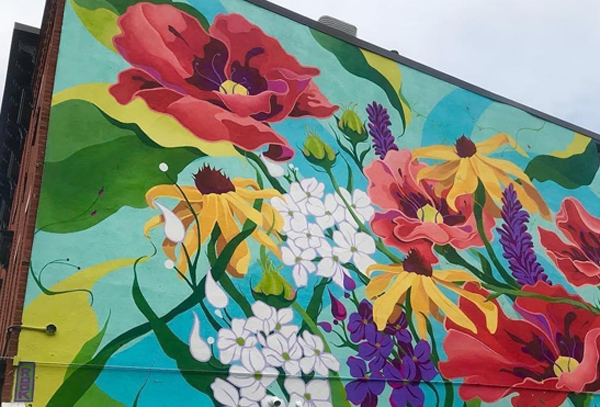
Since 2014, SMW has facilitated the creation of over 75 outdoor public murals, as well as over 100 smaller projects such as planter boxes, indoor murals, fire hydrants, and street sculptures. They mostly work with local artists but have also sought funding to bring in artists from other cities to inspire and enhance the skills of local artists.
Murals, like graffiti, speak to the ancient impulse to fill a blank wall with imagery that has meaning for the artist and/or the community. Public mural initiatives offer constructive and supportive opportunities for talented youth to develop (and redirect) their artistic skills. Murals beautify a city and tell important stories about its residents. Like their graffiti counterparts, murals might memorialize people and events, offer political and social commentary, and create spaces for dialogue.
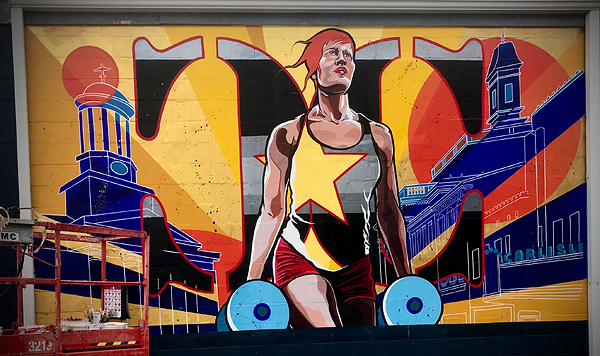
photo courtesy of the artist
One step at a time, with courage
Aron admits, “Murals are a test of my courage. A wall often seems a mountain. It teaches me that, when facing life, one step at a time with courage rather than fear is a much more pleasant experience! I feel particularly focused through the mural process. And with all that I create, I feel so much humility, as there is much room for improvement and exploration. I am thankful to live a life where curiosity, exploration, and humility are ever present.”
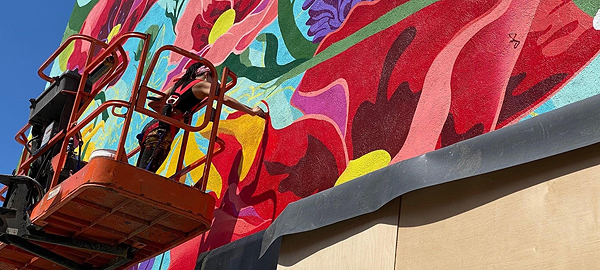
photo courtesy of the artist
Inspiration from innocence
When asked, “Where do you get inspiration for your murals?,” Aron answers: “In the golden colors of summer’s evening, children laughing, running, rolling in the grass in a wide open field. They are like a field of lightening bugs, each one zooming around and lighting up.”
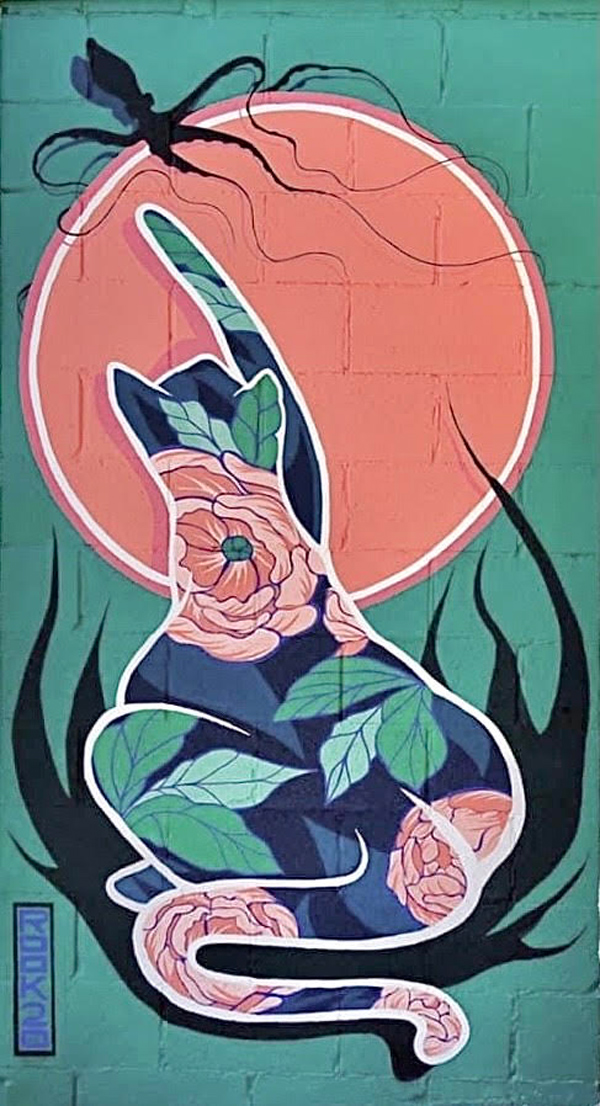
photo courtesy of the artist
Connecting to heritage
Aron also works with wood, an artistic tradition that surrounded her as a child. She remembers her late grandfather’s carving studio, the smells of wood chips and the sheepskins that cushioned his stool, the excitement of waiting to see his completed pieces. After he passed, she inherited his pyrography (wood-burning) machine, and discovered a few articles he had written about carving. In one, he describes his process of allowing the wood to decide what form it would take.
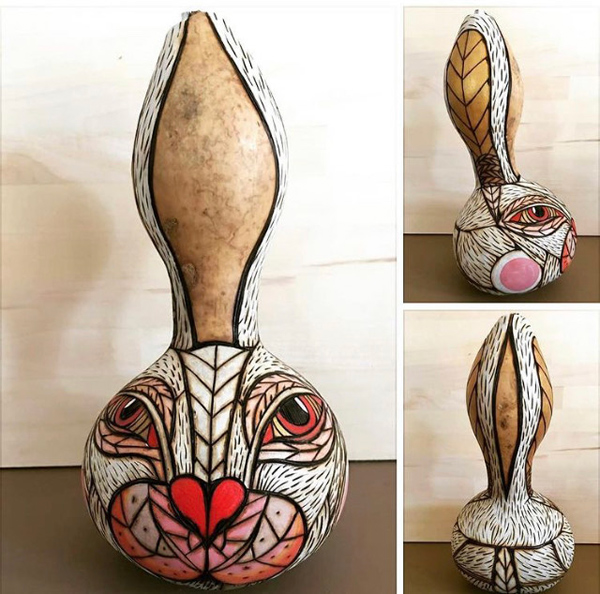
photo courtesy of the artist
“Working with wood brings an undeniable spiritual connection between myself, my grandfather, and his artistic essence,” she says. “I think there must be a doorway to the spirit world through the swirls of smoke...”
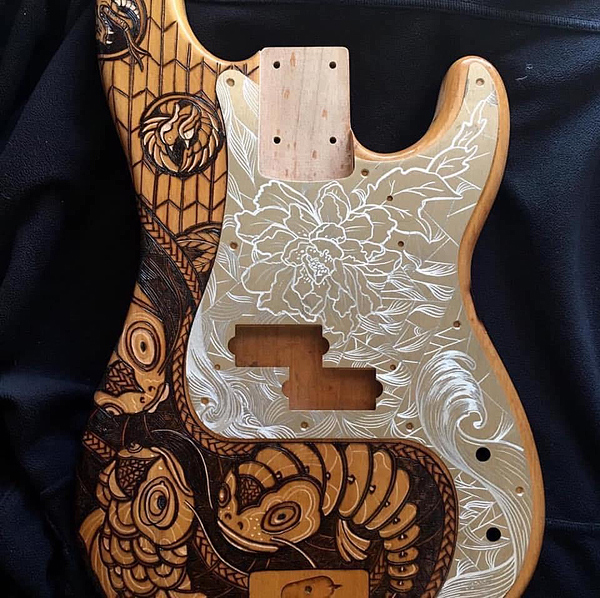
photo courtesy of the artist
Apprenticeship
Her grandfather’s influence has become more intertwined in Aron’s artwork throughout her artistic journey, and she regrets not learning more from him before he passed away. So she recently reached out to wood carver Jim Hiser for help in developing her skill.
Based in Carlisle, PA, Jim is a sought-after carving teacher, not only locally but nationally. He is the current President of the Caricature Carvers of America, former President of the Conewago Carvers, and former President of the West Shore Woodcarvers.
In Jim’s work, Aron has found an opportunity to link to her Korean heritage. “Sculpting wood holds a prominent place among Korean and Pennsylvanian folk art crafts,” she says. “Jim’s style and skillset in creating expressive characters is evocative of a central theme within Talchum (pronounced tahl-choom), a Korean folk theater that uses only music and masked performers to express the suppressed emotions of Koreans.”
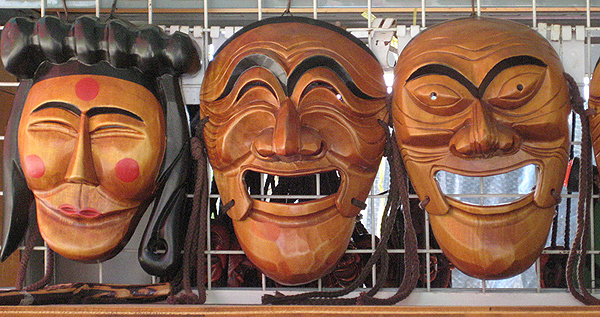
photo from Wikimedia Commons
Talchum masks are hand carved, each one a unique representation of the emotion being expressed by the performer. No one in the local Korean community knows this art form. But as a caricature carver, Jim has the sensibilities to capture these exaggerated expressions in wood.
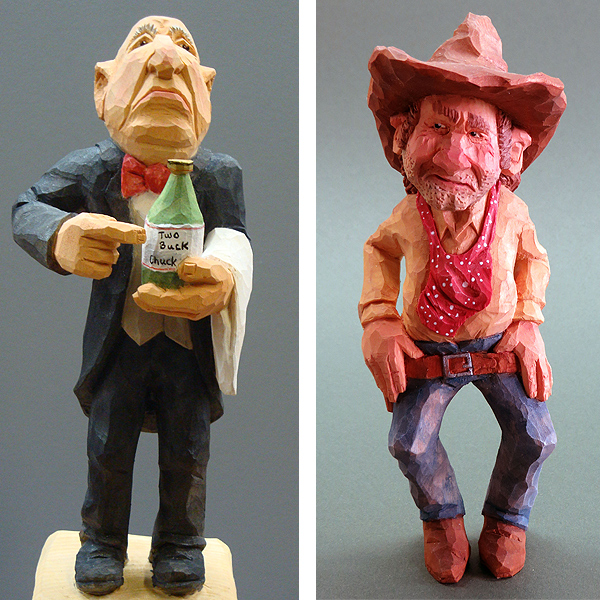
photo courtesy of Jim Hiser
In 2022, Jim and Aron applied for and received an apprenticeship grant from the Pennsylvania Council on the Arts. The apprenticeship will move Aron toward her goal of carving the expressive masks of Talchum. “Through learning the practice and process of carving facial expressions,” she adds, “I feel there is a unique opportunity to intersect and connect with my Korean and adoptive ancestors.”
A sense of purpose
Aron shares that art has given her a companion through much of her life. “There were times when I would cry into my sketchbook about things I wasn’t able to share with others. It is something that I can contribute in this lifetime and gives me a sense of purpose.”
image courtesy of the artist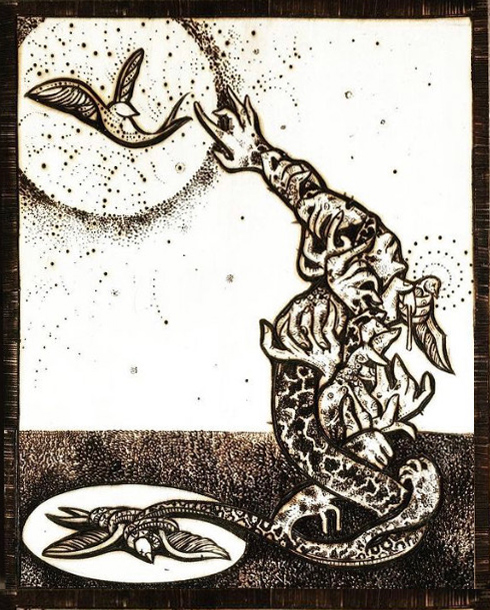
She acknowledges that she is a pretty shy person and that art can be a significant tool of connection, communication, and documentation of the human experience. It has been since the beginning of humanity.
Aron would love to connect with artists of all disciplines. You can find her:
On Instagram @ Artist Aron Rook
On Facebook @ Aron Rook
By email: AronRookArtist@gmail.com
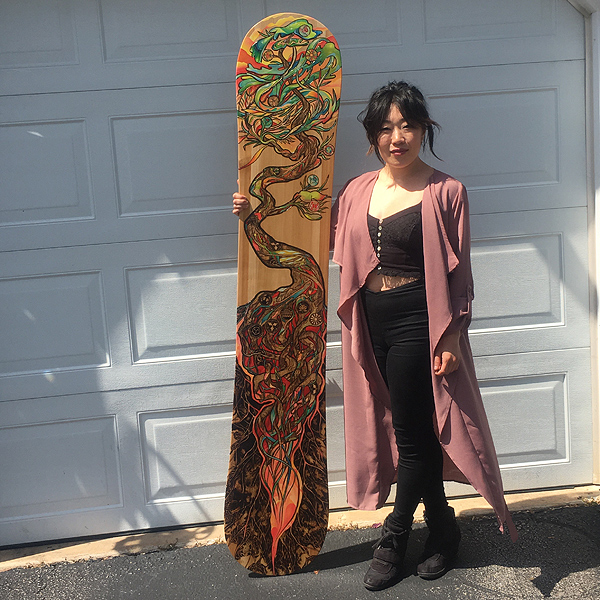
photo courtesy of the artist


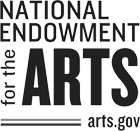
Brand icons for Facebook, YouTube, Instagram and other social media platforms are the trademark of their respective owners. No endorsement is implied.